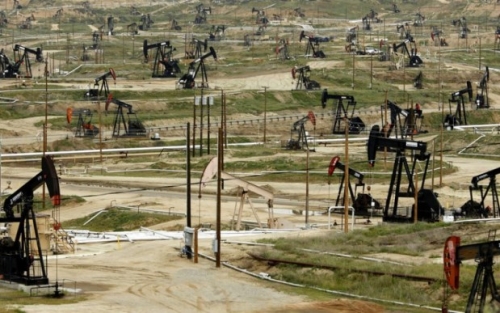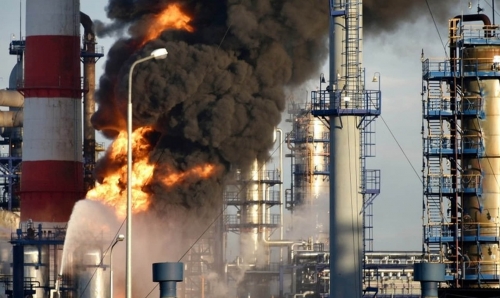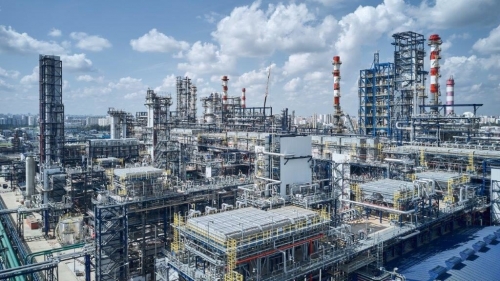Oil prices fell, reversing the prior weeks’ gains as the market shrugged off geopolitical risk premiums, shifting the focus back to fundamentals. In addition, a report that OPEC+ plans to hike production in August could add more to the price fall.
BKR Rig Count | The total active drilling rigs in the United States decreased by 7 last week, to 547.Oil rigs dropped by 6 to 432, and gas rigs dropped by 2 to 109.Rig count in the Permian Basin dropped by 1 to 270| Jun 27 | BKR NAM Rig Count
US Crude Inventories, excluding those in the Strategic Petroleum Reserve (SPR), decreased by 5.8 MMbbl to 415.1 MMbbl (about 11% below the 5y average for this time of year). On the products side, gasoline decreased by 2.1 MMbbl (3% below the 5y average). Distillate fuels decreased by 4.1 MMbbl (20% below the 5y average). Total commercial petroleum inventories decreased by 4.2 MMbbl | June 20 | EIA Weekly Report
President Trump indicated he might ease his "maximum pressure" campaign against Iran, potentially allowing China to keep buying Iranian oil. His statements have confounded oil traders and few in his administration, with some arguing now is the time to escalate pressure on Tehran, not ease it. His remarks sparked debate over whether he plans to relax restrictions on Iran’s oil trade, with some seeing it as a signal to energy markets to prevent a price surge, while others see it as a possible policy shift | Jun 27 | Bloomberg
OPEC+ is set to consider extending its run of super-sized production increases at a meeting next month, as group leader Saudi Arabia leads a push to recoup market share. Eight key OPEC+ nations have agreed on bumper 411,000 barrel-a-day increases in each of the previous three months. Several delegates, who asked not to be identified, said their countries are ready to consider the same hike again for August when they convene on July 6 | Jun 27 | Bloomberg
Israel's Leviathan and Karish natural gas fields have resumed operations after a near two-week shutdown due to regional conflict, reinstating vital energy exports to Egypt and Jordan. The Leviathan and Karish fields, managed by Chevron and Energean, respectively, recommenced operations after a ceasefire was reached between Israel and Iran. Imports from Israel are expected to ramp up gradually, with full operations likely by Saturday | Jun 26 | GlobalData
China’s oil and gas consumption will remain a cornerstone of its energy mix until 2030, but the role of these fuels is evolving rapidly, according to Lu Ruquan, president of China’s state-owned research arm CNPC Economics & Technology Research Institute (ETRI). “China’s oil consumption is shifting from being a primary transportation fuel to a feedstock for the chemical industry,” he said. Meanwhile, natural gas is entering what Lu described as a “rapid growth phase" | Jun 24 | Upstream
Energy Institute states “[energy] demand is shifting but not shrinking,” in its latest ‘Statistical Review of World Energy.’ The group sees a flattening of oil growth driven by China, while renewables continue to underpin the so-called ‘age of electrification’. Electricity demand rose 4% and continued to exceed total demand growth. Conversely, fossil fuel demand increased by a lower 1%, which the Institute said is testament to tangible progress in the transition. At the same time, while the leading renewable energy sources, wind and solar, grew by a combined 16% in 2024 and remained the fastest-growing segments of the energy system, the pace of renewables deployment continues to be “outstripped” by total demand growth | Jun 26 | Upstream
Gas prices fell heavily on Tuesday in Europe after a ceasefire brokered in the Israel-Iran-US conflict eased concerns over LNG flows in the region. The gas market had been watching the events unfolding in Iran with growing concern, as some 20% of global LNG traded volumes pass through the Strait of Hormuz. Analysts at Saxo Bank spoke of “risk premium evaporating” following the ceasefire agreement, as trade flows to Hormuz are expected to remain uninterrupted | Jun 24 | Upstream
The European Parliament approved a proposal on Tuesday to extend gas storage regulations throughout the European Union through 2027.EU countries will be required to reach 90% of gas storage filling levels by 1 December each year, with flexibility of up to 10% in the case of unfavourable market conditions. The flexibility in filling rules responds to industry concerns that targets would drive a spike in European gas prices ahead of the filling deadline | Jun 25 | Upstream
Looking ahead
Global Crude Oil Markets Short-Term Outlook | The war and now uneasy ceasefire between Israel and Iran introduce fresh uncertainties to the oil market, but S&P’s core view remains intact: Oil supply growth will outpace demand growth and lower oil prices. And there will be more oil supply, not less, from the Gulf region. S&P expects global crude oil supply to exceed crude oil demand in the second half of 2025 by 1.2 million b/d, with most of the imbalance in the fourth quarter. As a consequence, currently low crude oil inventories in high visibility markets will rise. S&P base case projects Dated Brent prices fall to the $50-$60/b range (upper $40s to upper $50s/b for WTI) later this year and into 2026. A ceasefire does not mean the conflict is over. The fear premium in the price of oil can reappear overnight. Middle East geopolitical risks have occupied the headlines, but OPEC+ countries have started to visibly increase production in June. Saudi Arabian crude and condensate exports are up nearly 700,000 b/d as of the middle of June, at a level that would imply the country is producing along the lines of the 9.387 million b/d it has targeted for the month. Also, President Donald Trump’s message that “China can now continue to purchase oil from Iran” signals a pause, if not the end of his administration’s efforts to curtail Iranian exports. Regarding US production, the price of oil and Wall Street are the de facto regulators. S&P’s view on price and capital discipline point to total US crude oil and condensate production (including offshore) falling 600,000 b/d from mid-2025 to the end of 2026. In comparison with last month’s short-term outlook, S&P oil price trend remains the same — downward — but the average price level for the second half of 2025 was raised by $8.50/b. A key reason for the adjustment is the higher starting point in June because of the oil price fear premium. The per-barrel dollar decline — $14-$15/b — from June to December 2025 is roughly the same compared with last month’s short-term outlook. World oil (liquids) demand growth for 2025 was revised up 100,000 b/d, whereas 2026 was revised down 50,000 b/d | Jun 27 | S&P
Rystad Oil & Gas Sanctioning Update | Offshore sanctioning activity in 2025 is expected to decline by almost 56% compared with last year. Rystad projects the upstream sector will sanction oil and gas developments totaling $93 billion this year, down from $148 billion in 2024. Breaking down the total, Rystad anticipates $52 billion in greenfield commitments, with $25 billion already sanctioned so far this year. Onshore sanctioning activity is set to touch $41 billion, 30% up from last year’s $31 billion, with some $35 billion already sanctioned. This year, Rystad sees offshore sanctioning concentrated in the Middle East and Africa, such as Qatar’s North Field COMP4, UAE’s Umm Shaif LTDP-2, Lower Zakum LTDP-1 and Eni’s Coral North off Mozambique and Baleine Phase 3 off Cote d’Ivoire. Onshore sanctioning will be led by Woodside Energy’s $18 billion Louisiana LNG project, which was sanctioned earlier this year, along with some land developments in the Middle East and Russia. Rystad anticipates that sanctioning activity will remain subdued this year due to ongoing market instability, which has been stoked by the recent Iran-Israel conflict. Operators and suppliers are facing significant challenges both in commodity prices and security of shipping routes, prompting Rystad to lower the average Brent oil price forecast for 2025 to $69 per barrel. This slowdown, however, offers suppliers with substantial backlogs an opportunity to free up capacity and enhance their ability to undertake new projects | Jun 23 | Rystad Oil & Gas Sanctioning Update

%20(1).png)



